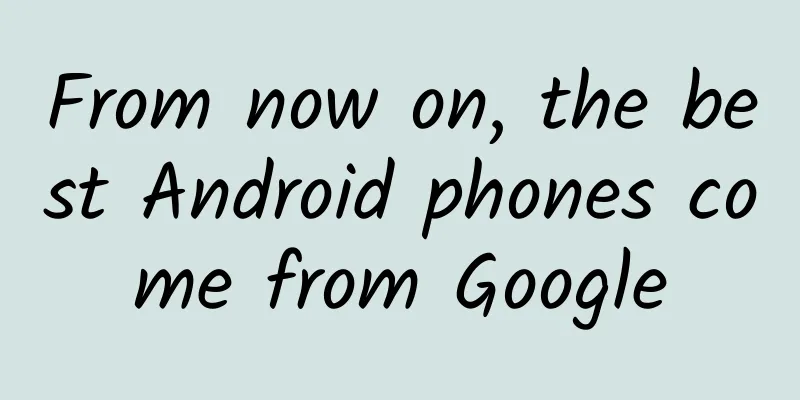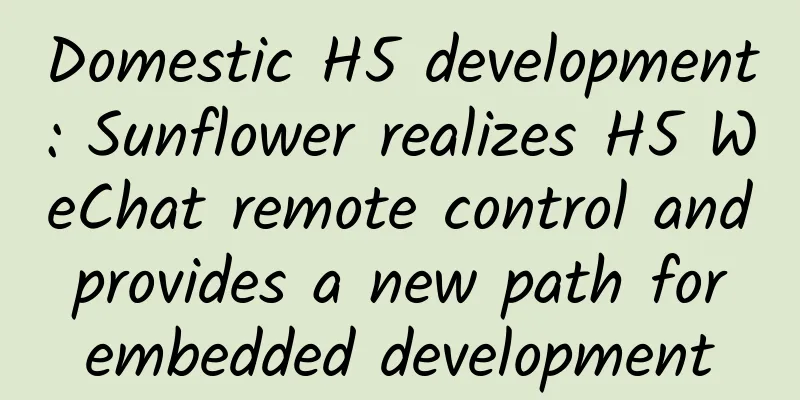From now on, the best Android phones come from Google

|
Google is getting serious about hardware. Some time ago, it announced the acquisition of 2,000 HTC R&D personnel who had been cooperating with it in hardware manufacturing for several years. Obviously, compared with the last acquisition of Motorola for $12.6 billion, this acquisition is more focused and purposeful, supplementing its mobile phone manufacturing capabilities. We therefore have to re-examine its hardware manufacturing and R&D capabilities. This means that it has the ability, or to be more cautious, the potential to be involved in software development and hardware design and manufacturing at the same time like Apple, which is particularly important when Google's strategy fully shifts to AI-first. You can feel Google's ambition and strength from its new batch of consumer hardware, especially Pixel 2 and Pixelbook. Pixel 2, the top of the pyramid, from Google Among the major consumer electronics categories, Google is best at mobile phones, which can be traced back to the Nexus One in 2010. The OEM is Google's old partner HTC. Even in the context of the industry at that time, Nexus was considered a top-notch product, and the Nexus 4, developed in cooperation with LG, was a great device with both performance, design and cost-effectiveness. However, due to the limitations of sales channels and the positioning of Nexus, it was only popular among certain groups of people, such as geeks, developers and Google enthusiasts. If the previous Nexus was just a benchmark and demonstration, then since Nexus was abolished and renamed Pixel, Google's attitude towards mobile phone design and manufacturing has leapt to a higher level. The new products were manufactured by two old friends of Google. The smaller Pixel 2 came from HTC, while the 6.0-inch Pixel 2 XL was made by LG. Both products inherited the characteristic elements of the first generation of products, glass and metal splicing. Of course, it also adds a lot of fashionable elements. Google's favorite color-contrasting style is used in new mobile phones. The Pixel 2 XL's unique black glass with white body and a panda-shaped design with a few orange buttons has captured the hearts of many straight men. The larger Pixel 2 XL uses an OLED full screen supplied by LG Display, while the Pixel 2 uses an AMOLED from Samsung. In addition, IP67 waterproof and dustproof has been added, instead of the previous daily waterproof. Google has become one of the few brands besides Sony, Samsung, and Apple to implement IP-level waterproof and dustproof in its mobile phones. Another thing that proves Google's expertise in making mobile phones is the camera. After its debut, it once again topped the list, ranking first in the DxO Mark mobile phone camera evaluation list, with an overall score of 98 points, squeezing out the iPhone 8 Plus and Galaxy Note 8 (tied for 94 points). Camera is also an important indicator to test the comprehensive software and hardware R&D capabilities of mobile phone brands. Even a large company like Huawei only made a qualitative leap in camera after cooperating with camera manufacturer Leica. The various hardware module indicators set by Leica have taught a good lesson to domestic players in the mobile phone industry. Even after many years of being rooted in the mobile phone industry, many brands still have difficulty in showing off their cameras. Since the first generation of Pixel, Google has been a leader in mobile phone photography, apart from Apple and Samsung. I have seen Google's spherical photo stitching skills as early as Nexus 4. With the highest comprehensive score of DxO Mark, Google has also achieved background blur in the portrait mode of Apple iPhone through software algorithms and hardware foundation of full-pixel dual-core focus, which can only be achieved by dual lenses. You can also see the shadow of HTC on the Pixel 2. The interactive method of squeezing the border to launch Google Assistant comes from HTC's popular flagship U11, except that on the latter, the squeezing action is used to call up the camera. Now all the R&D staff who have been involved in the Google mobile phone project since Nexus One and even G1 have joined Google, marking a new chapter. After Surface, Pixelbook once again eclipses PC OEM brands In terms of performance, the Pixelbook, which was unveiled on October 4, is basically not ranked among many Windows PC products. In terms of cost-effectiveness, Google's bargaining power and cost control are not as good as traditional OEM brands such as HP and Lenovo, which have tens of millions of shipments. What's more, cost-effectiveness has never been a factor that Google has to consider when making laptops. After all, the popularity and penetration of Chromebooks among the masses still depends on HP, Lenovo, Asus, and Samsung. But in terms of design and workmanship, Google's laptops, including the previous two Chromebook Pixels, can easily be ranked at the top. The new Pixelbook is a refreshing and exquisite product. The combination of glass and metal and the contrasting colors have been transplanted to notebook products, and they are very harmonious. The clean metal material is used as the main structure of the body, and the high-gloss, high-transparency glass is used as an embellishment to cover the top shell (A side) and the keyboard palm rest (C side). The Pixelbook has all the latest trends in laptops. 360-degree reversible design, 12.3-inch 2400×1600 (235 ppi) LCD touch screen, 2048-level pressure-sensitive stylus, 10.2mm thickness, battery life that can support a day's work, and up-to-date configuration, seventh-generation Core i5/i7, 8/16GB RAM, 128GB SSD. The most surprising thing is that it maintains a fanless design on a full-featured KabyLake processor. Google's experience in notebook design and manufacturing is much simpler than that of mobile phones. It can be roughly divided into two stages. The first stage is the Chromebook Pixel, which has launched two generations of products and the last update was in 2015. The second stage is the Pixelbook, which will be displayed in thousands of offline stores for people to experience and purchase. We are also happy to see the emergence of special laptop products outside of Apple's Mac family and Microsoft's Surface family. Conventional software companies such as Google and Microsoft have more modern design and manufacturing genes in their bones when it comes to hardware, and they do not have the inherent cost control burden of brands from traditional manufacturing industries. This is particularly rare. A piece of news that not many people care about is that October 4, when Pixelbook was officially unveiled, is also the 25th anniversary of ThinkPad, one of the oldest brands in the industry. By comparing the two, you can see how much the PC needs fresh blood. Made by Google, and Made for Google Just because we talk about Pixel 2 and Pixelbook separately doesn’t mean that other hardware products are not worth mentioning. Google Home, Pixel Buds, and Clips are also important members of the hardware ecosystem. With them, Google has the possibility of covering and penetrating multiple scenarios. In particular, the "seamless connection" between different devices, a concept that appeared as early as the 1991 "Terminator: Genisys", was realized under the leadership of Google. At the same time, Google has also brought in many partners to create a Made for Google ecosystem. The first batch of products starts with the 3.5mm headphone jack that has been cut off, including Libratone's headphones with USB Type-C interface, or simply taking out wireless Bluetooth headphones in one step. As for how far the integration of hardware and software and seamless experience in the Android world can go, it still depends on Google itself. There is no doubt that Google is one of the companies with the strongest software engineering capabilities in the world. A senior executive of Huawei's North Research Institute once talked about how its mobile phone system development, testing and compilation capabilities benefited greatly from cooperating with Google to develop Nexus 6P. Huawei's team, known for its wolfishness and workaholics, could only barely keep up with Google's development pace by taking small steps and running fast. This shows the strength of Google's software engineering capabilities, and this is just the tip of the iceberg. Obviously, Google's shortcomings are more in hardware design and manufacturing. Fortunately, for a beginner, the few products it just released are pretty good. In more than five years, we have witnessed Microsoft grow from a hardware rookie to a leading player. Of course, I am talking about Surface, not the former Windows Phone. The next hardware empire we are about to witness is Google, and Google's route is roughly the same as Microsoft's. On the one hand, it officially says that this is setting a benchmark for the industry, and on the other hand, it spares no effort to build sales stores and channels to allow more people to use the best hardware and the best software. Of course, for Google, all of this is based on the premise of AI-first. Several new hardware products are all related to AI, or some of its functions, such as Pixel Buds with built-in Google Tranlate instant translation and Clips integrated with Google Photos. As a winner of Toutiao's Qingyun Plan and Baijiahao's Bai+ Plan, the 2019 Baidu Digital Author of the Year, the Baijiahao's Most Popular Author in the Technology Field, the 2019 Sogou Technology and Culture Author, and the 2021 Baijiahao Quarterly Influential Creator, he has won many awards, including the 2013 Sohu Best Industry Media Person, the 2015 China New Media Entrepreneurship Competition Beijing Third Place, the 2015 Guangmang Experience Award, the 2015 China New Media Entrepreneurship Competition Finals Third Place, and the 2018 Baidu Dynamic Annual Powerful Celebrity. |
Recommend
3 people died, this disease can be transmitted from person to person! It has been spreading rapidly recently! Be careful
Experts in this article: Zhang Zhidan, Chief Phys...
Zhihu traffic generation methods and techniques!
When I wrote this title, my Zhihu community had j...
China Automobile Dealers Association: September 2021 New Energy Vehicle Industry Monthly Report
01. Market performance Overall performance of the...
Basic dance moves lead to lower limb paralysis? Dangerous "bending back"
|| || Written by reporter Lv Bingxin Photo and te...
Android performance optimization: How to avoid creating unnecessary objects in Android
[[169562]] In programming development, memory usa...
“Advertisements that I advise you not to watch”, how to market in the post-epidemic era?
NetEase has become popular again because of a ser...
Tik Tok search user ranking rules, how are Tik Tok users ranked?
Nowadays, most people use their free time to watc...
Most people have never tasted the true flavor of cooking oils because they are originally smelly.
Key Points ★ The edible oil we eat does not stink...
New Brand Content Marketing Tips!
Content marketing has always been the focus of br...
The U.S. Army is "making up for" field air defense and developing laser air defense weapons, perhaps because air superiority has been lost
The U.S. Army is getting closer to fielding its D...
Deng Shao: Analysis of the overall situation and new business forms of the OTT industry in 2015
In 2015, OTT continued to move in the same direct...
2015 App Operation and Promotion Strategy (Full Version)
The basic tone of the APP operation and promotion...
Which industries are suitable for bidding for OCPC? Urgent, waiting online!
We all know that Baidu recently updated its backe...
What happened to those who often used the “eye protection mode” on their mobile phones?
Planning and production Source: Higher-end humans...
Taking medicine on time is more important than you think! Don't ignore these situations
When doctors prescribe medicine, they sometimes r...





![Xiaomu C4D Product Rendering 2021 Redshift Course [HD Quality with Materials]](/upload/images/67cc031b1f700.webp)



